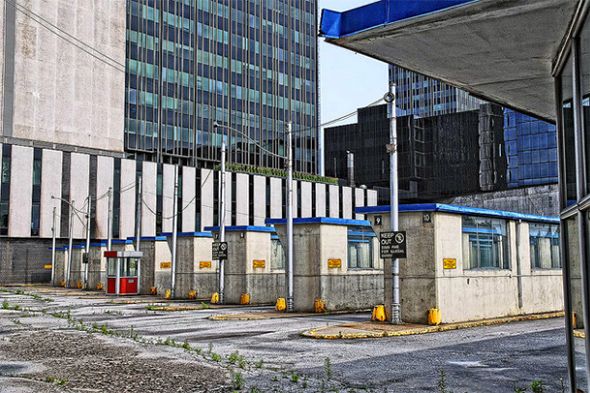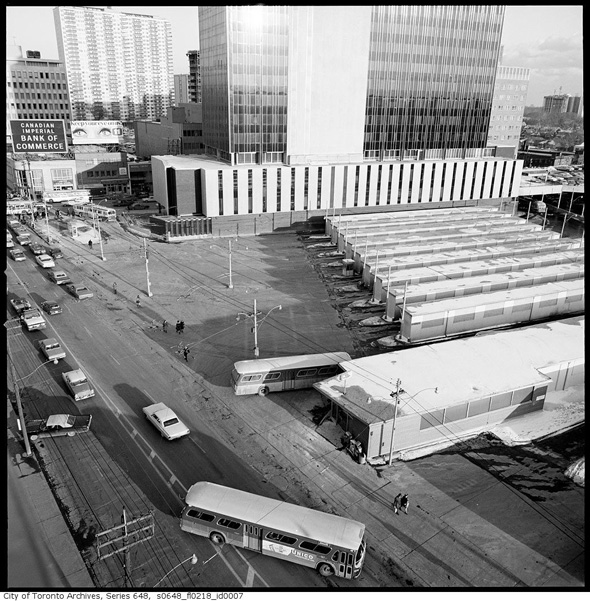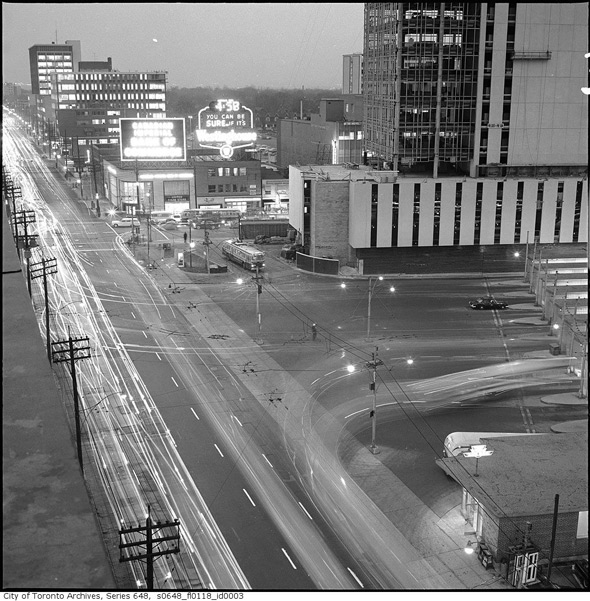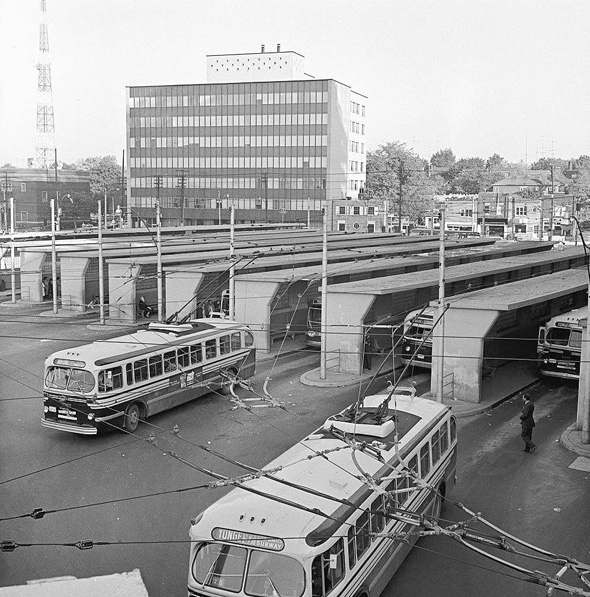
Eglinton Station bus terminal finally being torn down
One of the most recognizable bits of TTC infrastructure is finally being torn down after sitting vacant for over a decade. The sprawling former bus terminal at Eglinton Station will be razed to make way for a new station entrance and eventually further development.

The outdoor bus bays that made up the former terminal are a relic from the 1950s when Eglinton was the terminal station on the Yonge Line. The size of the station, which seems odd these days, was a product of a lack of density in the area at the time as well as the importance of Eglinton as a hub that connected the suburbs to the newly built subway.

When the station and bus terminal were first laid out, few would have imagined that Yonge and Eglinton would become one of the most dense intersections in the city at the heart of a burgeoning vertical neighbourhood. The abandoned site had long been an anachronistic throwback to a sleepier version of Toronto.

For my part, I will always remember running through the long westerly concourse, past the intoxicating smell of Cinnabon, and up the stairs of one of the bays because a flashing light indicated the bus had arrived. Thanks to its sheer size and all the Vitrolite tiles, the concourse always conferred an importance and elegance to Eglinton that most stations lacked.

That said, it's high time to replace the old terminal with new development. The tunnel boring machines from the Eglinton Crosstown will eventually be extracted here, and then work can commence on a new LRT station that will connect with the subway.

Beyond the new Crosstown Station, the future of the site is less clear. Local councillor Josh Matlow is pushing for a new park on the lands, and there's been talk of a commercial tower development. These aren't mutually exclusive outcomes, as the most likely outcome is a development with a significant green space component.
In any case, this particular relic of the TTC's past will be razed by the end of the year.
Photos by Randy McDonald, Scott Snider, and the Toronto Archives.
Latest Videos
Latest Videos
Join the conversation Load comments







